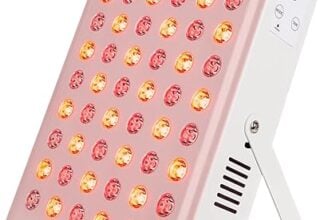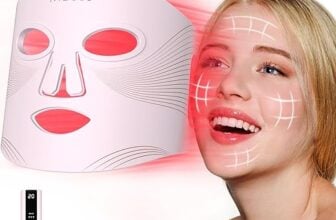Skin discoloration can arise from various factors including aging, sun exposure, and genetic predisposition. Among the most common forms are age spots and sun spots, often mistaken for one another due to their similar appearance.
However, understanding the differences between these two types of skin spots is crucial for effective prevention, treatment, and overall skin health. By distinguishing age spots from sun spots, individuals can take targeted steps to protect their skin and seek appropriate remedies, leading to clearer, healthier skin.
What Are Age Spots?
Definition of Age Spots
Age spots, also known as liver spots or solar lentigines, are flat, brown, gray, or black spots that typically appear on areas of the skin that have been exposed to the sun. They are a common sign of aging and are usually harmless, although they can be mistaken for other skin conditions.
Causes of Age Spots
Age spots are primarily caused by prolonged exposure to ultraviolet (UV) light from the sun or tanning beds. The UV light accelerates the production of melanin, the pigment that gives skin its color. When melanin becomes clumped or produced in high concentrations, age spots develop. This process is further catalyzed by the natural aging of the skin and a slower rate of cell turnover.
Common Areas Where Age Spots Appear
Age spots commonly appear on areas of the skin that are frequently exposed to the sun. These include the face, hands, shoulders, arms, and back. They can vary in size and typically form in clusters, giving the skin a mottled appearance.
Who Is Most Likely to Get Age Spots?
While anyone can develop age spots, they are most prevalent in individuals over the age of 50. People with fair skin and those who have a history of frequent or intense sun exposure are also at a higher risk. Additionally, tanning bed users are more susceptible due to the concentrated UV radiation.
What Are Sun Spots?
Definition of Sun Spots
Sun spots, also known as solar lentigines or sun lentigines, are flat, brown spots that appear on the skin after repeated exposure to ultraviolet (UV) radiation from the sun. Similar to age spots, they are typically harmless but can indicate skin damage resulting from sun exposure. Sun spots are also sometimes referred to as “actinic lentigines” and can be easily mistaken for other types of skin discoloration.
Causes of Sun Spots
Sun spots are primarily caused by cumulative sun exposure over time. When the skin is exposed to UV radiation, it triggers an increase in the production of melanin in an attempt to protect the deeper layers of the skin from damage.
Over time, this excess melanin can accumulate in certain areas, leading to the formation of sunspots. Their development is a direct consequence of both acute episodes of sunburn and chronic exposure to sunlight without adequate protection.
Common Areas Where Sun Spots Appear
Sun spots typically appear on areas of the skin that receive the most sun exposure. Common sites include the face, neck, shoulders, arms, hands, and back. These spots may become more pronounced or increase in number over time with continued exposure to UV rays.
Who Is Most Likely to Get Sun Spots?
Anyone who spends a significant amount of time in the sun without proper protection is at risk of developing sun spots. However, individuals with fair skin, those who have a history of frequent sunburns, and people who live in sunny climates are more likely to develop sun spots.
Additionally, older adults often have sun spots as a result of decades of sun exposure. Tanning bed users are also at elevated risk due to the concentrated UV radiation.
Similarities Between Age Spots and Sun Spots
Visual Similarities
Age spots and sun spots share numerous visual characteristics, which often leads to confusion between the two. Both types of spots are typically flat, round, and have a brown, gray, or black coloration. They appear in various sizes and can either be singular or grouped, creating a mottled pattern on the skin. These similarities in appearance can make it challenging to distinguish between them without a professional assessment.
Common Preventive Measures
Preventing both age spots and sun spots largely revolves around protecting the skin from ultraviolet (UV) radiation. Regular use of broad-spectrum sunscreen with a high SPF is crucial, even on cloudy days. Wearing protective clothing, such as wide-brimmed hats and long-sleeved shirts, can further shield the skin from harmful rays.
Avoiding peak sun hours, typically between 10 AM and 4 PM, and seeking shade whenever possible also contribute to reducing the risk of developing these spots. Additionally, adopting a healthy skincare routine that includes the use of antioxidants and moisturizers can help maintain skin health and resilience.
Possible Risks Associated with Both
While age spots and sun spots are generally harmless, their presence can sometimes indicate underlying sun damage, which may increase the risk of skin cancer. Both types of spots can serve as markers for cumulative UV exposure, pointing to a need for heightened sun safety measures.
Moreover, any sudden changes in the appearance of these spots, such as an increase in size, irregular borders, or variations in color, warrant a professional evaluation to rule out more serious conditions like melanoma. Regular skin check-ups are essential to monitor these spots and ensure any potentially dangerous changes are identified and treated promptly.
Differences Between Age Spots and Sun Spots
Differences in Causes
Although age spots and sun spots may look similar, they have distinct underlying causes. Age spots primarily result from the skin’s natural aging process combined with accumulated sun exposure over the years. As the skin ages, the production of melanin increases, but the rate of cellular turnover slows down, causing the pigment to cluster in certain areas.
In contrast, sun spots are specifically caused by direct, repeated exposure to ultraviolet (UV) radiation from the sun or tanning beds. This exposure prompts the skin to produce more melanin as a defense mechanism, which then manifests as sun spots.
Age-Related vs. Sun Exposure-Related
Age-related spots (age spots) commonly appear in older adults and are a visible sign of the skin’s aging process. They can manifest even in individuals who do not spend an excessive amount of time in the sun, though sun exposure can exacerbate their appearance. On the other hand, sun exposure-related spots (sun spots) can affect individuals of any age who have experienced significant UV exposure.
This means even younger people who frequently use tanning beds or engage in sunbathing without proper protection can develop sun spots.
Potential Treatments and Approaches
Treating age spots and sun spots often involves similar methods, though the focus may slightly differ based on the type of spot. For both, adopting a proactive skincare regime that includes wearing sunscreen daily can prevent new spots from forming and existing ones from darkening.
Topical treatments like retinoids, vitamin C serums, and hydroquinone can help lighten the spots by accelerating cell turnover and reducing melanin production.
For more advanced treatments, options include laser therapy, which targets and breaks down the pigmentation, or chemical peels that exfoliate the upper layers of the skin to reveal fresher, less pigmented skin underneath.
Cryotherapy, which uses liquid nitrogen to freeze and remove the spots, can also be effective. It’s essential to undergo these treatments under the guidance of a dermatologist to ensure their safety and efficacy, as improper use can lead to skin irritation or damage.
Prevention Tips for Both Age Spots and Sun Spots
Daily Sun Protection
One of the most effective ways to prevent both age spots and sun spots is through consistent and comprehensive sun protection. Incorporate the daily use of broad-spectrum sunscreen with an SPF of at least 30 into your routine, making sure to apply it generously to all exposed skin and reapply every two hours or immediately after swimming or sweating.
Additionally, seek shade during peak sun hours between 10 AM and 4 PM, and wear protective clothing such as wide-brimmed hats, sunglasses, and long sleeves whenever possible.
Healthy Skincare Routine
Adopting a healthy skincare routine can significantly reduce the risk of developing age spots and sun spots. Start with a gentle cleanser to remove impurities without stripping the skin of its natural oils.
Follow this with a moisturizer containing antioxidants like vitamins C and E, which can combat free radicals and promote skin repair. Incorporate a retinol or retinoid product in the evening to encourage cell turnover and reduce pigmentation.
Regular exfoliation using mild chemical exfoliants like alpha hydroxy acids (AHAs) can also help to fade existing spots and prevent new ones from forming.
Regular Skin Check-Ups
Regular skin check-ups with a dermatologist are crucial in monitoring your skin health and catching any concerning changes early. Dermatologists can provide professional assessments of any spots, determine whether they are age spots, sun spots, or something more serious, and recommend appropriate treatments if needed.
Self-examinations should also be performed monthly, noting any new or changing spots and seeking medical advice for anything suspicious. Staying vigilant and proactive about skin health ensures that any potentially harmful conditions are addressed promptly and effectively.
Treatment Options
Over-the-counter Products
For those looking to address age spots and sun spots without a prescription, several over-the-counter (OTC) products are available. These include topical creams and serums containing active ingredients such as hydroquinone, retinoids, kojic acid, and vitamin C. Hydroquinone works by inhibiting melanin production, while retinoids speed up cell turnover, helping to fade the spots over time.
Kojic acid and vitamin C are known for their brightening properties, gradually lightening hyperpigmented areas. Consistent use of these OTC products, as part of a daily skincare routine, can help reduce the appearance of age spots and sun spots over time.
Professional Treatments
For more persistent spots or those seeking quicker results, professional treatments administered by dermatologists can be highly effective. Laser therapy is a popular option, targeting pigment with intense light pulses that break down melanin, leading to a clearer complexion.
Chemical peels, which involve applying a chemical solution to exfoliate the skin’s upper layers, can also help minimize pigmentation. Microdermabrasion and cryotherapy are other viable options, with the former using a diamond-tipped wand to physically exfoliate the skin and the latter employing liquid nitrogen to freeze and remove the spots.
These treatments should always be performed by qualified professionals to ensure safety and optimal results.
Home Remedies and Lifestyle Changes
Apart from conventional treatments, certain home remedies and lifestyle changes can provide additional benefits for managing age spots and sun spots. Natural remedies such as aloe vera, green tea extract, and lemon juice are often touted for their skin-lightening properties and can be applied directly to the spots.
Moreover, a diet rich in antioxidants, including fruits, vegetables, nuts, and seeds, can support overall skin health and resilience. Staying hydrated and avoiding excessive sun exposure is equally critical in preventing further pigmentation.
Incorporating these habits into your daily routine can complement other treatments and help maintain a clear, healthy complexion.
When to See a Dermatologist
While many age spots and sun spots are harmless, certain warning signs indicate the need for a professional consultation. If you notice any spot that changes in size, shape, or color, it is crucial to seek the expertise of a dermatologist.
Additionally, spots that itch, bleed, become painful, or develop irregular borders should be evaluated promptly. These changes can sometimes signal more serious conditions, such as skin cancer, which requires early detection and intervention for the best outcomes.
Warning Signs That Require Professional Attention
- Sudden Changes in Appearance: Any rapid alteration in the appearance of a spot, including changes in color, growth in size, or changes in texture, should be examined.
- Asymmetry: If one half of the spot does not match the other half in shape or color, it could be a sign of a more serious condition.
- Irregular Borders: Spots with uneven, scalloped, or poorly defined borders may require a dermatologist’s evaluation.
- Multiple Colors: Spots that contain varying shades of brown, black, tan, red, white, or blue can be concerning.
- Diameter Growth: Any spot that is larger than 6 millimeters in diameter (about the size of a pencil eraser) warrants attention.
- Persistent Itching or Bleeding: Spots that itch persistently, bleed, or do not heal over time should be checked.
Benefits of Consulting with a Dermatologist
Consulting with a dermatologist offers numerous advantages beyond the detection and treatment of potentially harmful spots.
Dermatologists can provide personalized skincare advice and prescribe treatments that are tailored to your specific skin needs. With access to professional-grade treatments and the latest advancements in skincare, they can offer solutions that are often more effective than over-the-counter options.
Regular dermatologist visits can help you maintain optimal skin health, address concerns before they become problematic, and ensure early intervention if any suspicious changes occur. This proactive approach not only helps manage existing spots but also promotes a healthier, more radiant complexion overall.
Conclusion
In summary, taking proactive steps to monitor and care for your skin can make a significant difference in your overall skin health. Key takeaways from this guide include:
- Regular dermatologist check-ups are essential for early detection and treatment of any concerning skin changes.
- Over-the-counter products, featuring ingredients like hydroquinone, retinoids, kojic acid, and vitamin C, can help reduce the appearance of age spots and sun spots.
- Professional treatments such as laser therapy, chemical peels, microdermabrasion, and cryotherapy provide effective solutions for more stubborn pigmentation.
- Incorporating home remedies and lifestyle changes, like using natural ingredients and maintaining a diet rich in antioxidants, can support overall skin health.
- It is crucial to seek professional help if you notice any warning signs such as rapid changes in a spot’s appearance, asymmetry, irregular borders, multiple colors, diameter growth, or persistent itching and bleeding.
We encourage you to practice good skincare habits consistently. By staying vigilant and proactive, you can maintain healthy, radiant skin and address any issues promptly.
Remember, your skin is a vital part of your overall health and well-being. Stay hydrated, protect yourself from sun exposure, and don’t hesitate to consult a dermatologist for personalized care. Your skin will thank you for it.





